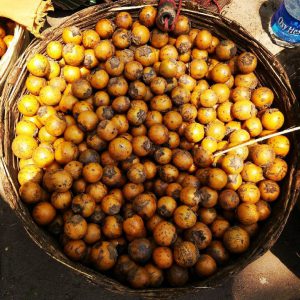Uncultivated forest food: Hidden treasure of nutrition
“Forest foods are the best available sources of micronutrients. At a time when we are talking about micronutrient deficiency, we can bank in on forest food and it is high time we took measures to protect the rich food bio-diversity of forests.”
By: Pragati Prava
Bhubaneswar: At a time when nutrition analysts are concerned about the fact that at least two billion of people across the globe suffer from malnutrition, the problem of malnutrition has no impact in the interior tribal pockets of Odisha where people mostly dependent on uncultivated forest food.
According to Bidyut Mohanty, who heads an organisation called SPREAD, they had visited Mudulipada and Andrahal, two cut-off villages of Malkangiri district for mapping of nutrition and food security scenario. “We were surprised that there was no trace of malnourishment in those villages even though the Public Distribution System and Integrated Child Development Services like Anganwadi have not been reached there at that time. The villagers were solely dependent on an array of uncultivated forest food. They practice agriculture in the dense forest, but their dependence on agriculture was very less. He added that none of the villagers were affected by anaemia thanks to the greens like Barada saga. He lamented that plantation of pine, jatropha, eucalyptus, acacia inside the natural biodiversity-rich area is playing a spoil sport.
Hemant Kumar Sahu, a Botanist, who works on biodiversity management and uncultivated forest food said the forest dwellers get more than 200 varieties of fruits, 50 varieties of greens and 50 varieties of tubers from forests.
Nutrition expert Nityanand Mahapatra opined that forest foods like different greens, Kendu, chara and jamun are the best available sources of micronutrients. They are affordable too. At a time when we are talking about micronutrient deficiency, we can bank in on forest food and it is high time we took measures to protect the rich food bio-diversity of forests.
You may be interested in: Khadia Oustees’ Cry For Survival
Talking about micronutrients, the retired doctor said nutrients like iodine, zinc, iron, and Vitamin A which the body needs in very small amounts to keep fit are called micronutrients. They enable the body to produce enzymes, hormones, and other substances critical for proper growth and development of the body.
Damodar Goia, a 48-year-old Santhal community member of Genteisahi on the foothills of Similipal biosphere, said the forest adjacent to their village has remained the source of food, nutrition and livelihood for generations. “We are never bothered about less rainfall, crop loss and drought. Forest gives us food, fodder and fuel. We never depend on outside sources for food or other requirements. We will never experience hunger as long as the forest, our perennial source of food, is there,” he added.
“We get a variety of mushrooms, greens, fruits like figs, Jamun, Char, Kendu, mangoes and jack fruits from forests, said Sumati Goia, a teen-aged girl of the same village, who studies intermediates in a nearby college.” She added, “When I went out of my village for the first time to study in high school, I was taken aback on the sight of many of my friends, who are affected by diseases related to malnutrition. But we never suffer malnutrition in our village, thanks to an array of foods, we get from our forest, which we protect and nurture.”

“Our platters are full with a variety of seasonal food like tender bamboo shoots, kendu, jackfruit, amla, bel, tamarind, custard apple and several tubers. We also harvest honey, harida and bahada, a share of which we keep for our requirement for medicinal use and sell the remaining amount to add to our earning,” said Sumati’s sister-in-law Damayanti Goia who is in her twenties.
Anam Purty of the village said, “Apart from fruits, tubers and greens, we relish a variety of edible insects like Kai and kurkuti from the forests which adds spice to our platter. We also raise goats and chicken and consume their meat to add to our taste and nutritional requirement,” he added.
According to nutrition researchers, greens available in the forest are high in micronutrients like pro-vitamin A (Beta Carotene), anti-oxidants and proteins. The leaves are rich in digestible iron, zinc and manganese as well. The tubers and mushrooms have high iron, zinc, vitamins and anti-oxidant content. They added forest foods are more resilient to climate change than those of the cultivated crops. They maintained that it is time to preserve the rich food diversity of the forest to assure nutritional security of the forest-dwellers.
SK Khuntia, however, raised a different concern. He said forest foods are in high demand in local weekly markets and they become a craze among urban population. Forest produce such as honey, amla and several fruits are in great demand in city shopping malls. It seems like it will result in economic empowerment of the tribal communities. But as they will tend to sell these produces outside, their nutritional security may get affected. The fear of degradation of the forests due to over exploitation may not also be avoided.
Raising another concern, Forest Rights activist Bijaylal Mahanta of Similipal, said the commercial monoculture plantation in forests under several projects of the government is badly affecting the natural biodiversity. While the governments reap commercial benefits from Eucalyptus, acacia and teak, it is affecting the productivity of natural plants and fertility of soil.
Also read: Cyclone Fani: Relief And Restoration Yet To Reach Victims




 Ms Kalinga
Ms Kalinga